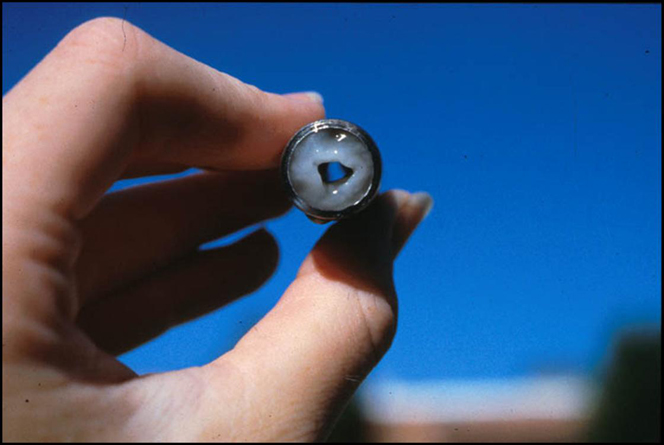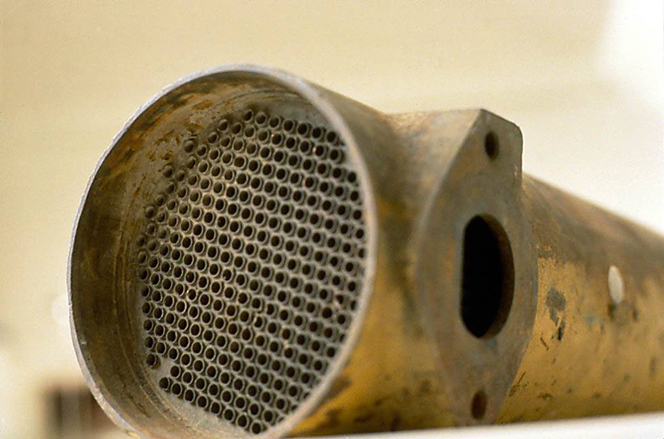Controlling Biofilm Accumulation
Controlling biofilm accumulation is by far the most common and extensive interest of the CBE Industrial Associates. This topic will now be addressed by looking at some examples of industrial systems with biofilm problems, summarizing the research questions which the Industrial Associate members have (and continue to ask), and then look for common themes among these lists of research questions.
Biofouling and biocorrosion in industrial water systems
Let us begin with the category of biofouling and biocorrosion in industrial water systems. Industrial water systems typically have copiotrophic??? (nutrient-rich) water which is circulated at ambient temperatures which are favorable of rapid microbial growth. These conditions can result in large biofilm deposits forming along the flow path as shown in the figure below.

This type of large-scale biofouling is common in many industrial water systems including nuclear power plants.



